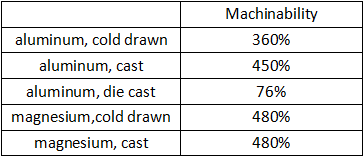CNC carbon steel CNC machining is still the most effective method of on-demand manufacturing, particularly when it comes to the production of metal components. Let's take a closer look at the costs involved in this process. Despite the rapid advancements that are being made in the field of 3D printing,
-
CNC Machining Polycarbonate has been around since the early 1950s, but thanks to recent technological advancements in digital supply chains, its price has dropped by a significant amount, and it is now readily available to a much larger number of professionals
-
CNC milling is a well-established digital manufacturing process that, when applied to CAD files, results in the production of parts that are highly accurate and possess excellent physical properties
Because it does not require any tooling, 3D printing has low start-up costs, which makes it an especially competitive option for producing low volumes or one-off custom parts. Another type of digital manufacturing technology that can produce parts on demand is known as additive manufacturing, which is also known as 3D printing.
The widespread coverage of 3D printing in traditional media may have led to inflated expectations from this technology in applications for which it is not the most suitable, particularly for the production of metal parts. These applications may have led to inflated expectations from this technology.
In this article, we will take a more in-depth look into the costs of CNC Machining Aerospace Parts (machine, labor, and material costs), and compare it to 3D printing through some back-of-the-envelope calculations and practical examples in order to gain a better understanding of the state that these two technologies are in at the present time. The purpose of this comparison is to gain a better understanding of the state that these two technologies are in at the present time.
The Costs of the Machines
The machine rate, also known as the cost per hour, is typically determined by dividing the total cost of purchase by the total number of hours that it is anticipated that the machine will be in operation (typically eight years at 5,000 hours per year). The cost of the overhead machine accounts for approximately two-thirds of the total cost of both CNC milling and 3D printing.
There are many distinct kinds of CNC machines. The average output of a machine in an hour can vary greatly, depending not only on its architecture but also on the capabilities it possesses.
When compared to the machine cost per hour of multi-axis CNC machining, which typically ranges from $75 to $120 or higher, the price of CNC turning is typically priced lower at $35 per hour. This does not include the salary of the machine operator, which typically falls somewhere in the neighborhood of $35 per hour. In addition to this, you should factor in the salary of the machine operator, which typically falls somewhere in the neighborhood of $35 per hour.
The hourly rate of industrial 3D printers, on the other hand, can range anywhere from $10 to $20 for industrial SLS or FDM machines to more than $100 per hour for metal SLM and DMLS 3D printing systems. In addition to this, the costs associated with the risk of print failure should also be included; according to a study, risk-related costs can cause the operating costs of 3D printing to increase by a factor of two.

This suggests that the total cost of ownership and operation of a CNC machine is comparable to, or much lower than in the case of metal, that of an industrial 3D printer. In other words, the CNC machine is more cost-effective.
The price of the components involved
The following table provides a rundown of the costs associated with purchasing stock metal alloys and plastic materials that are typically used in CNC for a sheet that has dimensions of 6 inches by 6 inches by 1 inch (or approximately 150 millimeters by 150 millimeters by 25 millimeters). These costs are for a sheet that has a total area of 6 square inches.
The same volume of material is equivalent to approximately $40 worth of Nylon 12 powder for SLS 3D printing — or 650 grams at $60 per kg — or $1300 worth of stainless steel powder for DMLS or SLM metal 3D printing — or 4.3 kg at $300 per kg. Both of these values are based on the price of the powder per kilogram. The weight of the powder measured in kilograms serves as the basis for both of these prices.
In addition, the topologies of components that are intended for 3D printing should be optimized in order to lessen their overall weight and make the most efficient use of the material. Since CNC CNC Machining Aerospace Parts is a subtractive manufacturing technology, there is, of course, a significant amount of waste produced as a result of the material being removed from the starting block. This waste is produced as a result of the material being removed from the starting block. This is especially important to keep in mind for parts that will be fabricated out of metal.
One of the most common misconceptions about three-dimensional printing is that it is not wasteful. However, this is not always the case. The price that one must pay for this quickly adds up, especially when one considers the price of the materials that are required for 3D printing. Only 50-80 percent of the unused powder can be reused, depending on the process (in the case of SLS and DMLS/SLM).
As a consequence of this, the cost of materials in 3D printing is typically quite a bit higher than the cost of materials in CNC.